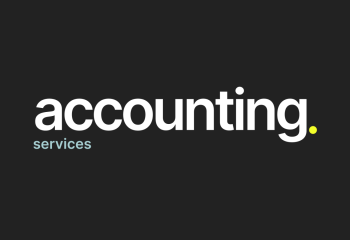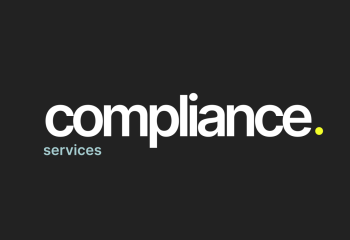Legal Update: 2025 Draft of Vietnamese Bankruptcy Law – Part 2: Introduction to the concept of “Recovery Procedure” to be introduced & Protections to Creditor and Debto
Views: 1982
The Supreme People's Court has just introduced the Draft Law on Bankruptcy (amendments) (hereinafter referred to as "Draft 2025") to amend the Bankruptcy Law 2014 No. 51/2014/QH13 (hereinafter referred to as "Bankruptcy Law 2014"). The Draft 2025 detail a comprehensive set of legal revisions intended to make Vietnam’s bankruptcy procedures more transparent, efficient, and fair. ALTAS has studied the Draft 2025 (current version 1.0) to understand legal implications which will be presented below.
.png)
The key differences between Draft Bankruptcy Law 2025 and Bankruptcy Law 2014
1. Scope and Purpose: The Draft 2025 explicitly states it covers procedures for filing, accepting, and initiating "recovery" and "bankruptcy" for businesses and cooperatives, while the 2014 law does not mention "recovery" in its scope. The amended version also emphasizes clarifying asset obligations and preservation during the recovery and bankruptcy processes, whereas the 2014 version does not explicitly mention it.
2. Amendment to the Definition of "Insolvency" and Addition of the Definition of "Risk of Insolvency"
The 2025 Draft proposes two options for defining "insolvency":
- Option (1): "An enterprise or cooperative is considered insolvent if it fails to fulfill its debt payment obligations within 6 months from the due date, except in cases of force majeure events or objective obstacles";
- Option (2): "An enterprise or cooperative is considered insolvent if it fails to fulfill its debt payment obligations within 3 months from the due date."
Regarding the definition of "risk of insolvency," an enterprise is considered at risk of insolvency if its ability to meet debt obligations within the next 6 months may severely impact its business operations. Alternatively, an enterprise is also considered at risk if it has outstanding due debts for less than 6 months at the time of filing for rehabilitation procedures, and this significantly threatens its operations. The 2014 Bankruptcy Law has not yet provided a specific definition of this concept.
3. Online Procedures: The Draft 2025 introduces the possibility of conducting bankruptcy procedures online, including filing applications, paying fees, submitting evidence, and holding meetings, while the 2014 version does not include provisions for online procedures.
4. Role of the Court: The 2025 Draft introduces provisions regarding the establishment of a specialized Bankruptcy Court and expands the jurisdiction of the High People’s Court and the Supreme People’s Court as follows:
- The specialized Bankruptcy Court is responsible for: (1) Handling rehabilitation and bankruptcy petitions for enterprises and cooperatives; (2) Enforcing rehabilitation and bankruptcy decisions; (3) Recognizing and assisting foreign bankruptcy proceedings; (4) Summarizing practical bankruptcy case resolutions and proposing case law; (5) Identifying and recommending constitutional and legal compliance issues in adjudication and case resolution; (6) Providing legal interpretation in adjudication and case resolution; (7) Imposing administrative sanctions for procedural obstruction under legal regulations; (8) Performing other duties and powers as prescribed by law.
- The High People’s Court has the authority to review requests, petitions, and appeals concerning effective bankruptcy decisions issued by the specialized Bankruptcy Court.
The Supreme People’s Court has the authority to review petitions and appeals under special procedures regarding reconsideration requests for bankruptcy declarations made by the High People’s Court.
Additionally, it has the jurisdiction to resolve disputes over authority between specialized Bankruptcy Courts.
5. Judges Handling Bankruptcy Cases: The 2025 Draft expands the duties and powers of judges overseeing bankruptcy proceedings as follows:
- Duties:
- Guide creditors, enterprises, cooperatives, and other involved parties in collecting and submitting documents and evidence in rehabilitation and bankruptcy proceedings per legal regulations;
- Assist creditors, enterprises, cooperatives, and other involved parties in collecting documents and evidence by requesting relevant agencies, organizations, or individuals to provide such materials when the parties have taken necessary measures but failed to obtain them, upon the court’s approval.
- Rights:
- Decide whether to open bankruptcy/rehabilitation proceedings;
- Open a bank account to manage funds collected during the bankruptcy proceedings they are assigned to handle;
- Recognize mediation results;
- Suspend rehabilitation or bankruptcy proceedings.
6. Asset Management and Liquidation Administrator: The 2025 Draft provides more detailed regulations on the qualifications and conditions for asset management and liquidation professionals. The amended law also allows trustees to appoint legal or business experts from the List of Financial, Restructuring, and Asset Management Experts maintained by specialized firms, the Ministry of Economic Development, the State Bank of Vietnam, the State Audit Office, and the State Securities Commission as advisors, with court approval.
7. Fees and Costs: The Draft 2025 supplements and adjusts regulations on bankruptcy expenses into expenses for restoration and bankruptcy. Accordingly, the cost of restoration and bankruptcy is additionally prescribed with expenses including: "It is the amount payable for handling rehabilitation and bankruptcy proceedings, including fees for trustees, asset management and liquidation enterprises, auditing costs, asset verification costs, asset preservation costs, asset valuation costs, asset auction costs, asset enforcement and recovery costs, accounting service fees, and other expenses as prescribed by law".
8. Asset Valuation and Management: The Draft 2025 mandates the asset manager to propose a plan for asset liquidation, and outlines different scenarios for dealing with secured assets. It also includes a procedure for the management and sale of assets.
9. Order of Asset Distribution: The Draft 2025 provides two different options for the order in which assets should be distributed, specifically in relation to the ranking of payments for salary and social insurance.
10. Restoration of Business Operations: The Draft 2025 emphasizes the possibility of restoring business operations, and includes a process for this with specific deadlines. The 2014 version does not specify a detailed timeline for such restoration.
11. Simplified Procedures: The Draft 2025 introduces "simplified" procedures for both recovery and bankruptcy procedure, with shorter time frames and fewer requirements. The 2014 law doesn't include simplified procedures.
12. International Bankruptcy: The proposed 2025 law includes provisions for Vietnamese courts to cooperate with foreign courts in bankruptcy proceedings and for recognition of foreign court decisions. The 2014 law has a chapter on foreign entities, but does not provide the same level of detail.
13. Disqualification of Management: The amended law 2025 specifies that management of a company may be disqualified from starting a new business for a period of time if they fail to comply with certain procedures. Additionally, the following exemptions are added: (1) The company or cooperative goes bankrupt due to force majeure; (2) The person holding the position of Chairman, CEO, Director, or member of the Board of Directors of a 100% state-owned enterprise, or the representative of state capital in a state-owned enterprise, is not responsible for the company's or cooperative's insolvency.
Business Recovery concept introduced by the Draft 2025
A business must meet specific conditions to be considered for recovery under the proposed amended bankruptcy law. The core condition is that the business is at risk of losing payment capability. This is distinct from being already unable to pay debts, which is the condition for bankruptcy. Here are the specific conditions and related details for a business to be considered for recovery:
1. Risk of Losing Payment Capability: The business must be in a state where it faces the risk of being unable to pay its debts. This indicates a financial situation that, if not addressed, could lead to insolvency.
2. Court Recognition: The business must have a plan for recovery that has been approved by the creditors at a meeting and recognized by the court. This implies that a formal process is initiated and overseen by the court.
3. Viable Recovery Plan: The business needs a recovery plan that can be implemented effectively. The recovery plan should include measures such as:
o Raising capital
o Reducing, exempting or postponing debt payments
o Changing the products and services being offered
o Introducing new production technology
o Reorganizing management
o Sale of shares to creditors and other investors;
o Sale or lease of assets;
o Modification of all or part of the rights of capital contributors and shareholders;
o Settlement of financial obligations to the state;
o Utilization of profits exceeding the projected amount under the business recovery plan;
o Handling of asset preservation measures currently in place;
o Other measures not contrary to the law.
4. Submission of Financial Reports: The business must submit financial reports for the past three years, audited by a certified auditor. If the business has been operating for less than three years, it must submit reports for the entire time it has been in operation.
5. Explanation of the situation: The business must provide an explanation of the reasons that led to the risk of losing payment capability and propose a recovery plan, if any.
6. No Existing Bankruptcy Proceedings: There must not be existing bankruptcy proceedings against the business. If another court has already initiated bankruptcy proceedings, the recovery application is likely to be rejected.
7. Acceptance by Creditors: The recovery plan needs to be approved by creditors representing at least 65% of the total debt of the business. If this threshold is not met but the plan is still
deemed viable, the business managers can still try to convince the creditors who did not approve it.
8. No fraudulent activity: There must be no evidence of fraudulent activity in the request for recovery.
2025 Draft Bankruptcy Law: Creditor and Debtor Protections
The proposed Draft 2025 offer several new protections for both creditors and debtors, aiming to create a fairer and more efficient process.
1. Creditor Protections:
· Right to Request Bankruptcy/Recovery: Both secured and unsecured creditors have the right to request the initiation of bankruptcy or recovery procedures if a business is unable to pay or at risk of being unable to pay its debts. This is a fundamental protection, ensuring creditors can take action when necessary.
· Oversight of Business Operations: The creditor's committee has the right to request that an asset manager review a company's financial situation after a recovery plan is approved. Also, a member of the committee can be appointed to oversee a business's operations following court approval. This provides oversight and helps ensure that the business is following the recovery plan and not engaging in any activity that would harm creditors' interests.
· Access to Information: Creditors have the right to receive copies of documents and evidence related to the bankruptcy case.
· Priority of Payments: The amended law 2025 establishes a clear order for the distribution of assets in bankruptcy, ensuring that certain creditors are prioritized. Specifically, the proposed Draft 2025 specifies that costs of bankruptcy are paid first, followed by employee wages and social insurance, and then other debts. There are two options for the priority of wages and social insurance, so the order will be clear after the law is implemented.
· Right to Propose a Recovery Plan: Unsecured and secured creditors can propose a recovery plan, which must then be examined by the business managers. This helps ensure that the recovery plan aligns with the creditors' interests and gives the creditors a voice.
· Right to Approve or Reject a Recovery Plan: Creditors have the right to accept or reject a proposed recovery plan, and a certain percentage of creditors must agree in order for a plan to be accepted.
· Right to Request a Change in Management: If the existing business managers are not able to execute a recovery plan, the creditors can request a change in leadership.
· Protection Against Asset Transfers: The amended law restricts the business from transferring assets or converting unsecured debt to secured debt, preventing the business from diminishing its assets to avoid paying creditors.
· Right to be Notified: Creditors have the right to be notified of court.
2. Debtor Protections:
· Opportunity for Recovery: The law provides an opportunity for businesses to recover from financial difficulties rather than immediately facing bankruptcy. This is a key benefit, allowing businesses to implement a plan to restore their financial health.
· Protection Against Immediate Asset Liquidation: The recovery procedure gives the business time to propose and implement a recovery plan, preventing immediate liquidation of assets, especially if a viable plan for recovery is accepted.
· Temporary Suspension of Debt Payments: Once a recovery plan has been approved, the business may temporarily halt payments on debts not included in the recovery plan. This prevents the business from becoming further indebted while attempting to recover.
· Business Operations During Recovery/Bankruptcy: The business is allowed to continue operating during the recovery/bankruptcy process, under the supervision of an asset manager and the creditor’s committee.
· Clear Rules and Procedures: The law is designed to establish clear procedures, which can help a business make informed decisions.
· Restructuring Options: The law provides for multiple options in a recovery plan, including debt reduction and changes to business operations.
· Protection of Assets: The law prevents creditors from unfairly seizing assets that are necessary to run the business.
· Fair Asset Distribution: The amended law provides a detailed hierarchy of how assets are distributed in case of bankruptcy, which gives a certain level of predictability for what they will be able to retain
· Protection against fraud: The amended law has clear penalties for management that hide assets or make false claims about their financial situation.
ALTAS provides Legal Services related to Bankruptcy and Corporate Restructuring
(i) Legal advice related to bankruptcy procedures such as: payment procedures, consequences, measures to handle assets, etc.;
(ii) Checking and evaluating the legality of contracts and due debts;
(iii) Representing clients in bankruptcy procedures, participating in negotiations with related parties;
(iv) Legal advice related to corporate restructuring.
Conclusion
ALTAS LAW is committed to supporting investors and businesses during this volatile period. Please contact Partner Chris Luong at chris.luong@altas.vn if you need further information or assistance.
Copyright © 2025 ALTAS LAW. All rights reserved. Ownership: This documentation and content (Content) is a proprietary resource owned exclusively by ALTAS LAW (meaning ALTAS LAW, ALTAS CORP and its member firms). Use of this Content does not of itself create a contractual relationship, nor any attorney/client relationship, between ALTAS LAW and any person. Disclaimers: The Content provided is for informational purposes only and may not reflect the latest legal or regulatory developments. Summaries of laws, regulations, and practices are subject to change. This Content does not constitute legal or professional advice for any specific situation and should not be relied upon as a substitute for reviewing and complying with applicable laws, rules, regulations, or official forms. Always seek legal counsel before making any decisions or taking any action based on this Content. ALTAS LAW, along with its editors and contributing authors, make no guarantees regarding the accuracy of the Content and explicitly disclaim any liability for any consequences resulting from actions taken, allowed, or omitted, whether fully or partially based on any part of the Content. The Content may include links to external websites, and external sites may also link to it. ALTAS LAW is not responsible for the content or functionality of any such external websites and disclaims all liability for any issues arising from their content or operation. Please note: Past results do not guarantee similar outcomes.
Written: Luong Van Chuong - Partner Lawyer at ALTAS Law & Dang Thi Ngoc Lan - Legal Senior Assistant
Date: 20/02/2025
.png)

























![?️ [ALTAS TALK IS COMEBACK | SERIES: “TAX MATTERS 2025”] ?️ [ALTAS TALK IS COMEBACK | SERIES: “TAX MATTERS 2025”]](thumbs/210x144x1/upload/news/altas-talkintro-7705.png)



